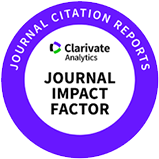Nutritional and physiological response to feed form and sodium bicarbonate-adjusted dietary electrolyte balance in lactating sows under heat stress.
Abstract
Heat stress (HS) during lactation poses a critical challenge in swine production, often impairing feed intake, metabolic function, and reproductive performance in sows. This study aimed to evaluate the effects of feed form (mash vs. pellet) and dietary electrolyte balance (dEB; 230 vs. 290 mEq/kg) adjusted with sodium bicarbonate on sow performance, litter growth, immune response, antioxidant status, and gut microbiota under HS conditions. A total of 40 multiparous sows were assigned to four treatments in a 2×2 factorial design: Mlow (mash + 230 mEq/kg), Mhigh (mash + 290 mEq/kg), Plow (pellet + 230 mEq/kg), and Phigh (pellet + 290 mEq/kg). Each treatment contained 10 sows with 3-5 parity and their initial body weight was 241.83 ± 16 kg at d 112 of lactation. The trial spanned from parturition to weaning (21 days) during summer at an average temperature of 28.8°C. Results showed that sows fed pelleted diets (Plow, Phigh) and higher dEB levels (Mhigh, Phigh) had higher (<italic>p</italic> < 0.001) average daily feed intake. Piglets from Mhigh and Phigh sows had increased (<italic>p</italic> = 0.001) weaning weights. Dry matter digestibility was increased (<italic>p</italic> = 0.022) in sows receiving pelleted diets. The tumour necrosis factor-alpha was lower (<italic>p</italic> < 0.001) in Plow, Phigh, and Mhigh (<italic>p</italic> = 0.010), with an interaction (<italic>p</italic> = 0.013) in feed forms and dEB. The interleukin-1β was lower (<italic>p</italic> < 0.001) in Plow and Phigh, with higher (<italic>p</italic> < 0.001) superoxide dismutase activity in Phigh and Plow. Hair cortisol was lower (<italic>p</italic> = 0.048) in pelleted groups, suggesting lower physiological stress. Although alpha diversity did not differ, beta diversity and relative abundance of <italic>Lactobacillus</italic> and <italic>Turicibacter</italic> indicated microbial shifts influenced by feed form. In conclusion, pelleted feed form and higher dEB, particularly the Phigh treatment, enhanced feed intake, litter performance, and anti-inflammatory status without negatively affecting milk composition or gut integrity. These findings support the integration of feed form and electrolyte strategies to improve sow productivity under HS conditions.
















